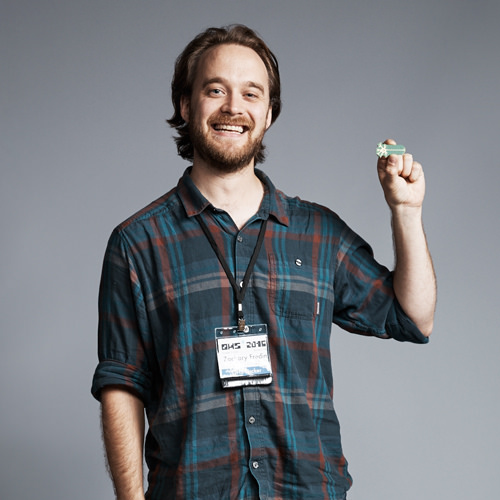Podcast: Play in new window | Download
Subscribe: Apple Podcasts | RSS

Welcome, Zach Fredin of NeuroTinker!
- Follow the ongoing project documentation of the Neurobyte project on Hackaday.io!
- Zach and Chris have known each other since 2004! They went to CWRU together.
- Zach got into the world of neurons when a friend started simulating them in Sketchup (formerly Google, now owned by Trimble)
- Watch the NeuroBytes in action on instagram or on YouTube (follow Zach’s channel for a range of videos, including side projects)
- He partnered with Joe Burdo after they connected on Hackaday.io. When checking out Joe’s credentials, Zach realized “The link was purple!”
- See Zach and Joe talking about NeuroBytes at Maker Faire NY 2016
- They got initial funding via SBIR
- NIH was funding STEM games but they didn’t get that funding
- NSF was funding “Educational applications”, which they did get!
- Tips for SBIR grant
- Email the grant director
- Get solid letters of support (customers)
- RTFM
- Money
- Phase 1 (success) – $150K
- Phase 2 (pending) – $750K
- Zach was surprised that they build in the ability to pivot but said, “Do you know how much paperwork a pivot would be?”
- If someone wants to see their application, email zach@neurotinker.com
- They used Keytronic EMS for manufacturing. It is local in Minneapolis.
- The design has 5 dendrites, 2 axons and is connected via JST connectors/wire. Or check out their quickstart guide for more info.
- He’s still looking for the link to the multidisciplinary article for STEM, if you know what he was talking about please leave a comment.
- Selling into education is tough. Little Bits has been doing that well (and raised $60M+ to do so)
- For Christmas Zach got a Flir Lepton sensor and the Seeed studio ESP32S.
- Zach made an oscilloscope using the Teensy and a 240×320 TFT. It was based off the printed guide Paul Stoffregen used in his training at the 2015 Hackaday Superconference.
- As a fan of soldering, Zach has done some fun breakout for chips (when needed) and also hand-carves boards for prototyping.
- Not available online, but Zach used to watch the Heathkit video guide to soldering
- Chris mentioned a presentation where they talked about how records are made.
Follow NeuroTinker on Instagram and Twitter

I don’t remember the McDonalds records, but back in the late 70s, Jack in the box came out with a series of vinyl records, each with a catchy tune! Here’s a picture of the record:
http://vinylstatistics.blogspot.com/2014/11/jack-in-box-vol-1-why-house-makes-noise.html
Also, you can see a record being recorded real-time with Dead Milkmen front man joe jack talcum:
https://vimeo.com/117968802
Please tell Zach that he can use arduino uno as an usb to gpib adapter and also that some soldering is required 🙂 Here is the link: http://egirland.blogspot.com/2014/03/arduino-uno-as-usb-to-gpib-controller.html
Were the McDonald’s records flexi-discs? I recall hearing an NPR item a while back about them:
http://www.npr.org/2015/04/18/400369975/its-thin-its-plastic-its-back-flexi-discs-find-new-fans
Yes, this was most definitely it. So it was plastic, but it was taped to the back of cardboard.